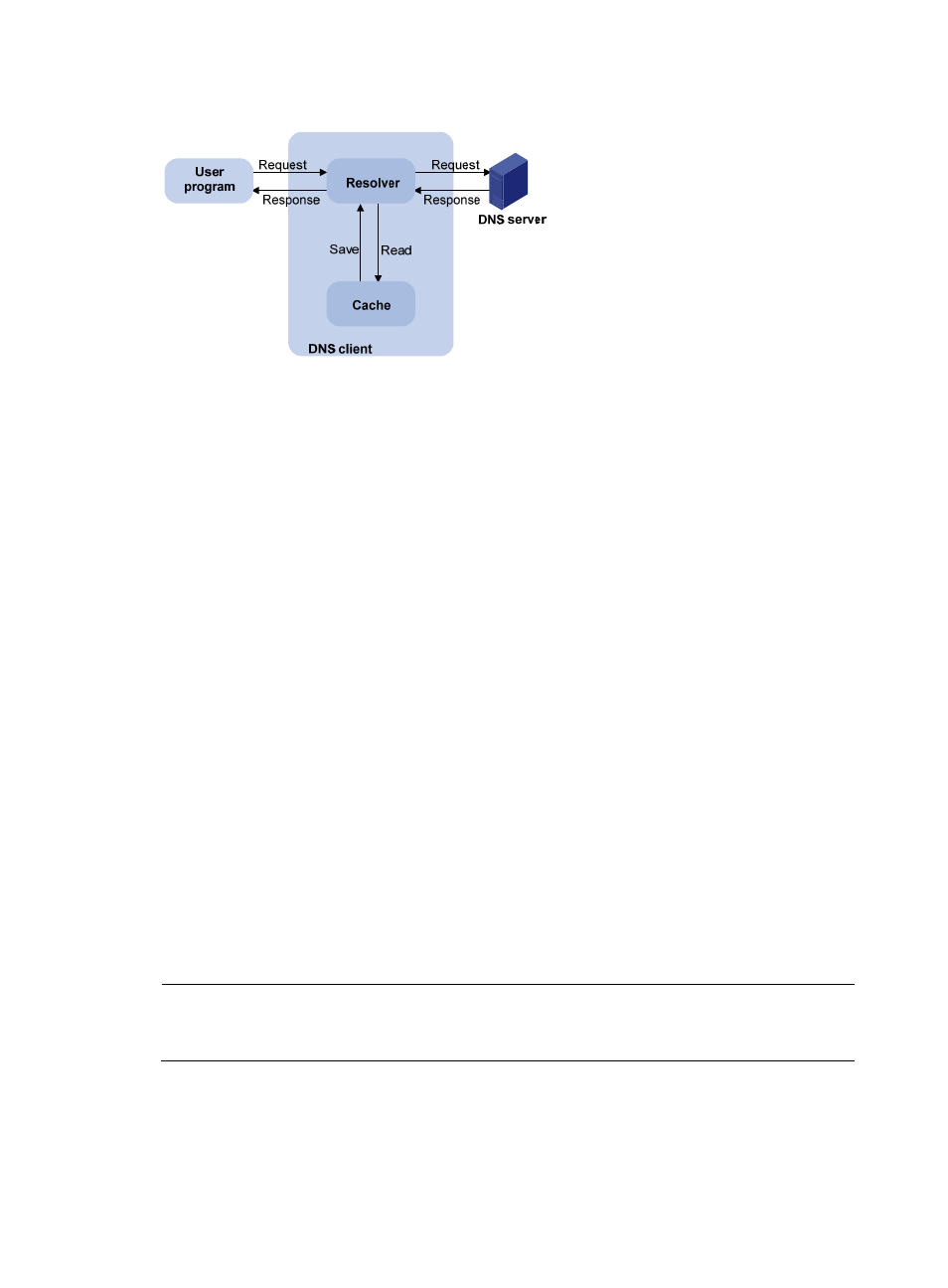Dns suffixes – H3C Technologies H3C S12500 Series Switches User Manual
Page 100

86
Figure 38 Dynamic domain name resolution
shows the relationship between the user program, DNS client, and DNS server.
The DNS client is made up of the resolver and cache. The user program and DNS client can run on the
same switch or different switches, while the DNS server and the DNS client usually run on different
switches.
Dynamic domain name resolution allows the DNS client to store latest mappings between domain names
and IP addresses in the dynamic domain name cache. There is no need to send a request to the DNS
server for a repeated query next time. The aged mappings are removed from the cache after some time,
and latest entries are required from the DNS server. The DNS server decides how long a mapping is valid,
and the DNS client gets the aging information from DNS messages.
DNS suffixes
The DNS client holds a list of suffixes, which the user sets. It is used when the name to be resolved is
incomplete. The resolver can supply the missing part.
For example, a user can configure com as the suffix for aabbcc.com. The user only needs to type aabbcc
to obtain the IP address of aabbcc.com, because the resolver adds the suffix and delimiter before
passing the name to the DNS server.
•
If there is no dot (.) in the domain name (for example, aabbcc), the resolver considers this a host
name and adds a DNS suffix before query. If no match is found after all the configured suffixes are
used, the original domain name (for example, aabbcc) is used for query.
•
If there is a dot (.) in the domain name (for example, www.aabbcc), the resolver directly uses this
domain name for query. If the query fails, the resolver adds a DNS suffix for another query.
•
If the dot (.) is at the end of the domain name (for example, aabbcc.com.), the resolver considers
it a fully qualified domain name (FQDN) and returns the query result, successful or failed. The dot
(.) at the end of the domain name is called a terminating symbol.
The switch supports static and dynamic DNS services.
NOTE:
If an alias is configured for a domain name on the DNS server, the switch can resolve the alias into the IP
address of the host.
